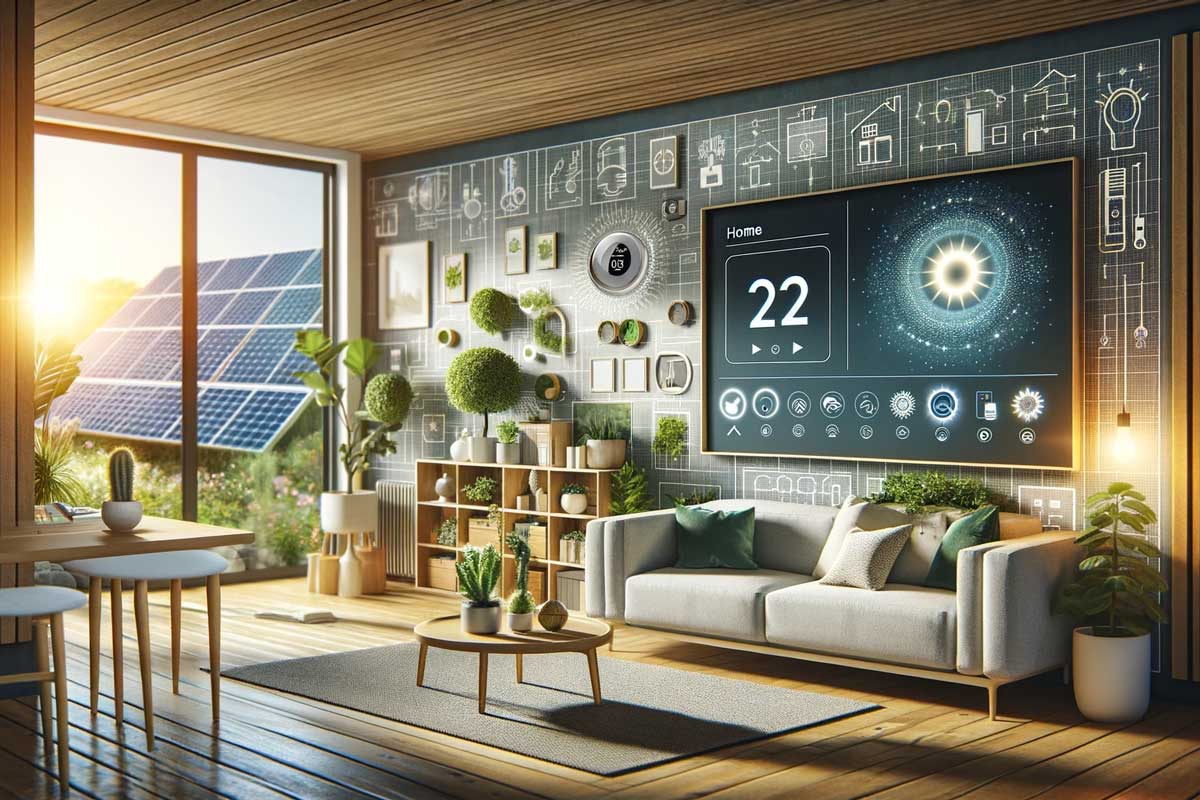
DIY Sustainable Home Automation Ideas: Boost Your Eco-Friendly Living
Share
In today's rapidly evolving technological landscape, creating a home that embraces DIY sustainable home automation ideas is not only possible but incredibly rewarding. For tech professionals and enthusiasts alike, the allure of integrating smart technologies with sustainability offers a unique blend of innovation and environmental stewardship. This article dives deep into the myriad of ways you can transform your living space into a sustainable and automated haven.
The Rise of Eco-Friendly Home Automation
The concept of home automation has been around for decades, but only recently has it taken a turn towards sustainability. As more individuals recognize the impact of their ecological footprint, the demand for eco-friendly home automation solutions has surged. This shift is not just about reducing energy consumption but also about creating a harmonious balance between technology and nature. According to a report on living sustainably with home automation, integrating automated systems with renewable energy sources can significantly reduce household emissions.
Key Components of a Sustainable Smart Home
Building a sustainable smart home involves several key components that work together to enhance energy efficiency and promote eco-friendly living. These components include:
1. Energy-Efficient Lighting
Smart lighting systems are a cornerstone of any sustainable home. By using LED bulbs and automated lighting controls, homeowners can significantly reduce their energy usage. These systems can be programmed to adjust brightness based on the time of day or occupancy, ensuring lights are only used when necessary. For more insights on smart lighting, check out this guide to sustainable smart home devices.
2. Smart Thermostats
Heating and cooling account for a substantial portion of household energy use. Smart thermostats allow for precise control over climate settings, learning your habits over time to optimize energy use. This not only reduces energy bills but also minimizes your carbon footprint. Explore how home automation can reduce electricity bills effectively.
3. Renewable Energy Integration
Integrating renewable energy sources, such as solar panels, with your home automation system can further enhance sustainability. By harnessing natural energy, you can power your home while reducing reliance on fossil fuels. Discover the latest trends in renewable energy integration for smart homes.
Practical DIY Sustainable Home Automation Ideas
Now that we understand the foundational elements of a sustainable smart home, let's explore some practical DIY sustainable home automation ideas that tech enthusiasts can implement:
1. Automated Water Conservation
Water conservation is a critical aspect of sustainability. Implementing smart irrigation systems that monitor weather conditions and soil moisture can optimize water usage in your garden. Additionally, installing smart water sensors can detect leaks and prevent water wastage, safeguarding this precious resource.
2. Smart Waste Management
Tech-savvy homeowners can also automate waste management by using smart bins that sort recyclables and compostables. These systems often come with sensors that alert you when bins are full, ensuring efficient waste disposal. Learn more about how to build an eco-friendly smart home with smart waste management.
3. Eco-Friendly Security Systems
Security systems are essential for any home, and sustainable options are available that minimize energy consumption. Solar-powered cameras and motion sensors can secure your home while keeping energy use low. Explore a range of ideas on home automation ideas for security.
The Future of Sustainable Home Automation
The future of home automation is undeniably green. As technology advances, the integration of AI and machine learning into home systems will offer even more opportunities for energy efficiency and sustainability. Homes will become smarter, adapting to our needs while minimizing their environmental impact. The journey towards a fully automated and sustainable home is an ongoing process, one that promises a brighter and more eco-conscious future.

FAQ: DIY Sustainable Home Automation
1. What are the benefits of a sustainable smart home?
Building a sustainable smart home offers numerous benefits, including reduced energy bills, a smaller carbon footprint, and enhanced convenience. By integrating smart technologies, homeowners can optimize energy use and contribute to environmental conservation.
2. How can I start automating my home sustainably?
Begin by assessing your current energy use and identifying areas for improvement. Start small with energy-efficient lighting and smart thermostats, then gradually incorporate renewable energy sources and smart water management systems.
3. Are there any government incentives for sustainable home automation?
Many governments offer incentives for homeowners who invest in renewable energy and energy-efficient technologies. These incentives can include tax credits, rebates, and grants, helping to offset the initial costs of implementing sustainable home automation systems.
